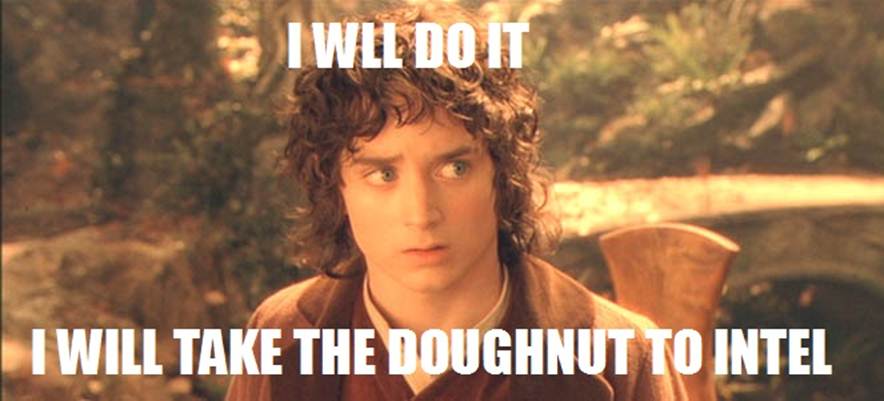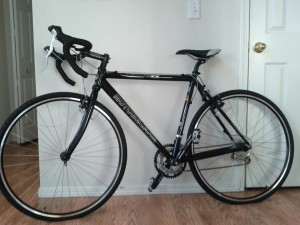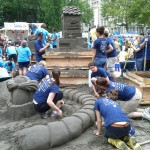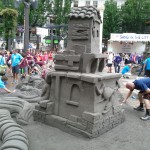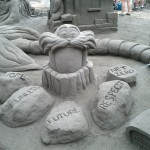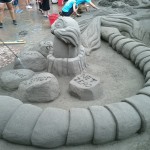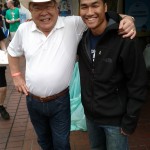My first experience with blood donation was in high school as a 16 year old when I donated for the Red Cross when they came to my school. I thought it was really cool to be able to donate and save someone’s life and the experience has led me to become a lifetime blood donor however I haven’t done it in a few years. This initial experience allowed me to get familiar with the process and learning not to be afraid of the HUGE ASS needle that they stick in your arm! That’s okay with me since needles, like the cold, never really bothered me anyway! And as sickening as it sounds, I actually like to look at it when they stick me.
I heard about plasma “donation” on the radio when I was a senior in college and they advertised that you could make $300 a month by donating plasma. I’ve read multiple articles about the semantics battle between using the word donation vs. selling and the main argument is that it’s not donating if you’re getting paid for it. At the end of the day, you are giving your plasma to help others survive and live longer therefore call it whatever you want but the end product is still the same. I decided to check it out and it was pretty identical to donating whole blood with the Red Cross except it took longer and you can donate twice in a week while you can only donate whole blood once every 8 weeks. I’ve donated at three plasma centers which include two locations from the same company in Gresham and Hillsboro along with a center from a different company in Portland. Before I started to donate plasma, I wanted to get as much information about the process, what its actually like, what can I expect, how much do I get paid, what are the health effects, etc., as I could. Therefore, the premise of this blog post is to provide my personal experience with the process mixed with what I’ve read over the annals of the internet – I’m going to report on plasma donation through my scope of what I saw and how I saw it.
The first step that needs to be done is to see if there are any plasma donations near where you live – this can be accomplished with a simple Google search for “plasma donation centers”. There are several providers that should have multiple centers where you live and from my experience they don’t vary that much from one to the other. I’ve read that centers are usually located in areas where people need the money like near college campuses and in the low-income parts of town. The centers I’ve participated in definitely fit this stereotype and the donors give off the vibe of being on the lower rung of the socioeconomic ladder. But at the end of the day, we were all donors trying to get a quick buck.
Once you find the center then you will need to go through the initial screening process which will take approximately 2-4 hours.During the process they will do a routine physical, ask you questions about your health, test your blood pressure, and take samples of your blood. It takes this long only the first time, your next visits will usually take 10-20 minutes before you begin your donation process. You can choose to donate after you pass this screening or elect to give a sample of your blood and then donate within the next few days. For the sake of my story, I will assume you just gave the samples and will return for your donation at a later date.
The following paragraphs is what you can expect when you decide to sell/donate your plasma as they are eerily similar at all locations. Once you enter the plasma center, you will go to the designated kiosk area where you sign-in with your thumbprint and answer similar questions that were asked in your initial health screening. If you’ve donated whole blood with the Red Cross before these questions will be very familiar like are you sick today, do you have any new tattoos, have you taken drugs monobobopoopo, coochietera, or tooko, have you ever had HIV, do you live with anyone with Hepatitis, yadda, yadda, yadda. There are approximately 20-30 questions and it’ll take you at least 5 minutes because you cannot move to the next question since they are timed. Here is a picture of the kiosk: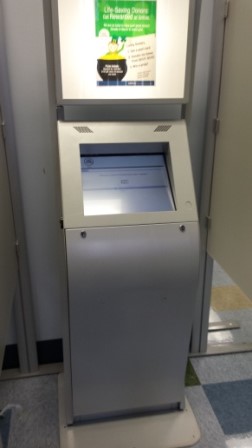 After you complete your questionnaire at the kiosk you will sit down in a lobby or wait in line until you’re called by a technician to complete your shortened health screening. Below is a picture of the lobby of the place I used to donate at in Portland. I’ve covered the face of the individuals to protect their privacy.
After you complete your questionnaire at the kiosk you will sit down in a lobby or wait in line until you’re called by a technician to complete your shortened health screening. Below is a picture of the lobby of the place I used to donate at in Portland. I’ve covered the face of the individuals to protect their privacy.
 Depending on how crowded the center is, you could wait anywhere from 2 minutes to an hour. When I donated at the center in Hillsboro it only took 2 minutes because it was new and basically empty around the time I came in (6:00 PM which is their closing time) while at the Gresham center it took closer to an hour because it was packed all the freaking time. The nurse will call you up and take you to a private room/stall where they will begin the blood screening process to make sure you’re healthy enough to donate that day. Here is a photo of what that room looks like, sorry for the potato quality.
Depending on how crowded the center is, you could wait anywhere from 2 minutes to an hour. When I donated at the center in Hillsboro it only took 2 minutes because it was new and basically empty around the time I came in (6:00 PM which is their closing time) while at the Gresham center it took closer to an hour because it was packed all the freaking time. The nurse will call you up and take you to a private room/stall where they will begin the blood screening process to make sure you’re healthy enough to donate that day. Here is a photo of what that room looks like, sorry for the potato quality.
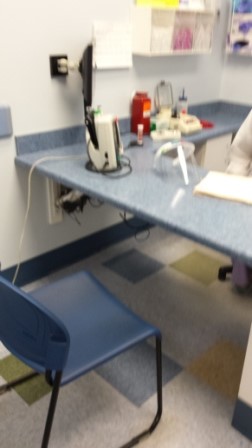 You’ll quickly find out that they ask for your full name and last 4 digits of your social security very often. Not sure if this is to verify if you’re the same person (I know, I know…) or to make sure you’re still thinking properly and not high off your ass. You can’t see in the photo above but there is a scale just behind the chair and that is what they’ll have you do first. This is important because there are 3 ranges for the amount of plasma you have to donate correlating to your weight – I weighed around 160 and was in the middle band which required me to donate 880 ML. At some centers you get more/less money (+/- $5-10) depending on your weight and at others its constant no matter what you weigh although you do have to donate more if you weigh more but you get paid the same as that skinny ass person. After they weigh you, then the worst part of the donation happens: the finger prick! They’ll prick you finger to get a blood sample so they test for your iron and protein levels. Other things they’ll check include your blood pressure, pulse, and temperature. After you pass all those then you move into the donation zone or as I like to call it “THE MATRIX”.
You’ll quickly find out that they ask for your full name and last 4 digits of your social security very often. Not sure if this is to verify if you’re the same person (I know, I know…) or to make sure you’re still thinking properly and not high off your ass. You can’t see in the photo above but there is a scale just behind the chair and that is what they’ll have you do first. This is important because there are 3 ranges for the amount of plasma you have to donate correlating to your weight – I weighed around 160 and was in the middle band which required me to donate 880 ML. At some centers you get more/less money (+/- $5-10) depending on your weight and at others its constant no matter what you weigh although you do have to donate more if you weigh more but you get paid the same as that skinny ass person. After they weigh you, then the worst part of the donation happens: the finger prick! They’ll prick you finger to get a blood sample so they test for your iron and protein levels. Other things they’ll check include your blood pressure, pulse, and temperature. After you pass all those then you move into the donation zone or as I like to call it “THE MATRIX”.
Below is what THE MATRIX looks like. I call it this because the first time I walked into the area I was freaking shocked! It looked so surreal. The Gresham center has like 10 rows of beds and it was full of people hooked up to machines that were taking their life force similar to The Matrix before Neo got rescued by Morpheus. I wish I had a photo of the Gresham center as my photos below does not do it justice.
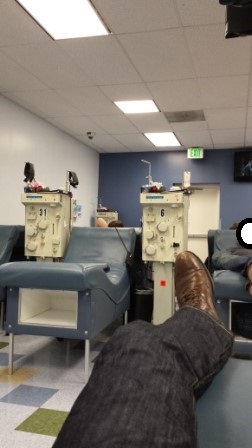
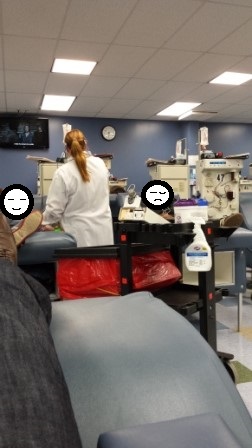 Once you sit on the bed, the technician will ask you if you want the right or left arm. I usually alternate arms but some people use just one arm. My reasoning was that I wanted to let the wound heal and not collapse the vein which was unlikely. You’re allowed to donate twice within a 7-day period. The big, grey machine you see in the photo will take whole blood from your body and then separate it into plasma, which they’ll keep, and return your red blood cells back to you. The entire process takes approximately 45-90 minutes depending on how well hydrated you are. The fastest I’ve done was 41 minutes and the longest was 75 minutes. The IV needle stick starts with them pumping up your arm to see your vein and the best location to stick you! Once they determine your veins are good to go they’ll put iodine on the location and mix it for 30 seconds. Then the FUN BEGINS! They’ll take the needle and stick it in you! I’m a crazy person and I love to look at when they do. Other people look away like a little bitch but hey, I don’t judge. Here is a photo of me with the needle in me arm! The blot of blood is rare and usually no blood escapes from the wound except when they extract the needle.
Once you sit on the bed, the technician will ask you if you want the right or left arm. I usually alternate arms but some people use just one arm. My reasoning was that I wanted to let the wound heal and not collapse the vein which was unlikely. You’re allowed to donate twice within a 7-day period. The big, grey machine you see in the photo will take whole blood from your body and then separate it into plasma, which they’ll keep, and return your red blood cells back to you. The entire process takes approximately 45-90 minutes depending on how well hydrated you are. The fastest I’ve done was 41 minutes and the longest was 75 minutes. The IV needle stick starts with them pumping up your arm to see your vein and the best location to stick you! Once they determine your veins are good to go they’ll put iodine on the location and mix it for 30 seconds. Then the FUN BEGINS! They’ll take the needle and stick it in you! I’m a crazy person and I love to look at when they do. Other people look away like a little bitch but hey, I don’t judge. Here is a photo of me with the needle in me arm! The blot of blood is rare and usually no blood escapes from the wound except when they extract the needle.
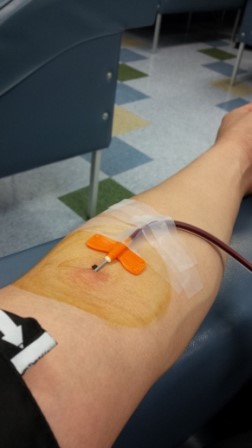 After you near the end of your donation, they’ll either give you a saline pack through the IV or make you drink a bottle of electrolytes (Powerade or Gatorade) to help you replenish the fluids you’ve just lost. After that you’re all done and you get paid!
After you near the end of your donation, they’ll either give you a saline pack through the IV or make you drink a bottle of electrolytes (Powerade or Gatorade) to help you replenish the fluids you’ve just lost. After that you’re all done and you get paid!
Most places will give you a very high dollar amount for the first 4-5 times you donate. IIRC, one place gave me $50 for the first time and $80 for the second time alternating till you gave 5 donations and another place gave me $50 for 4 donations. After that period expires, you’ll get into the regular payment schedule which gives you a small amount for the 1st donation and a larger for your second. For example, the most recent place in Portland was a $25/$45 split while the one in Hillsboro was $20/$40 – it varies from center to center but they’re all around that range. They also have promotions every month like you get a peel card for prizes on your 6th donation of the month or an additional $20 on your 7th and 8th donations.
If you just want to get some beer money, then this is a quick means to get that. You’re also helping others get crucial life saving medicine in the process. My only caveat is that you stop donating if you’re feeling/getting sick because it will prolong the amount of time you’re ill. I had first hand experience with this because I had a cold but kept going on keeping on. It was 3 weeks into my cold and I was very frustrated I didn’t get over it because I rarely got sick and never stayed sick for too long. I decided to stop donating and BOOM, within a few days I was back to normal. Your experience might vary but just giving you my insight. I also felt extremely drained after I donated and wasn’t able to do much – I just went straight to sleep as soon as I got home.
Therefore if you do decide to donate, make sure you know all the health implications and make sure you’re well hydrated the day prior, during, and after you donate. I personally had no qualms or ill effects from donating however there is limited research on the long-term effects for prolonged plasma donation. I’ve stopped donating at the request of my parents and I do miss the income a little bit; you can make more than 3 grand a year! Either way, you only have one body and money can’t buy health so make sure you cross your T’s and dot your I’s before you make the decision to start donating plasma. I hope this helps in your decision to donate and don’t hesitate to contact me through the social media links!

